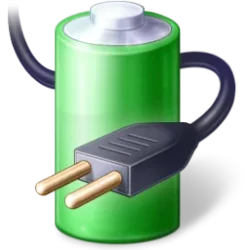Having read many threads (topics) like this one, I've come to the conclusion that many folks just don't understand how Windows works, or what the definition of a "CLEAN" install really is. Eh?
One example of a "CLEAN" install, would be an install to a brand new hard drive, that's never even been formatted before.
Like, what you'd have to do after a total HD Crash.
When a typical program is installed INTO Windows, there can be several to dozens of entries made into the System Registry. So just copying a program to another OS can be nearly Impossible.
Personally, I always do CLEAN installs, every time I install Windows to a new PC, or upgrade one version of Windows to another version of Windows.
Working with new or different versions of Windows is my Hobby, since I retired, so I do install it OFTEN.
To "Keep it Simple, Stupid!" (K.I.S.S.) I do this:
1. I never keep my data files on my C:\ drive. They are all in folders on the D: partition, and backed up to several external drives, Flash Drives, etc.
2. All of the programs that I normally install on a "Clean" install, are all on a single Flash Drive, along with all my Install/Setup scripts, Batch Files, etc.
All that makes doing a CLEAN install a real 'piece of cake'. I can do an Over-Write or Clean install on any of my many drives and never loose a single bit of data. Anyone can do what I do, with just a little bit of 'Forethought'.
Lately, I've been doing at least One Clean Install, every week.
TM
PS: I do not get Windows ISO's from MS! There are several, other, more reliable sources.
Details, available, on request.
One example of a "CLEAN" install, would be an install to a brand new hard drive, that's never even been formatted before.
Like, what you'd have to do after a total HD Crash.
When a typical program is installed INTO Windows, there can be several to dozens of entries made into the System Registry. So just copying a program to another OS can be nearly Impossible.
Personally, I always do CLEAN installs, every time I install Windows to a new PC, or upgrade one version of Windows to another version of Windows.
Working with new or different versions of Windows is my Hobby, since I retired, so I do install it OFTEN.
To "Keep it Simple, Stupid!" (K.I.S.S.) I do this:
1. I never keep my data files on my C:\ drive. They are all in folders on the D: partition, and backed up to several external drives, Flash Drives, etc.
2. All of the programs that I normally install on a "Clean" install, are all on a single Flash Drive, along with all my Install/Setup scripts, Batch Files, etc.
All that makes doing a CLEAN install a real 'piece of cake'. I can do an Over-Write or Clean install on any of my many drives and never loose a single bit of data. Anyone can do what I do, with just a little bit of 'Forethought'.
Lately, I've been doing at least One Clean Install, every week.
TM
PS: I do not get Windows ISO's from MS! There are several, other, more reliable sources.
Details, available, on request.





